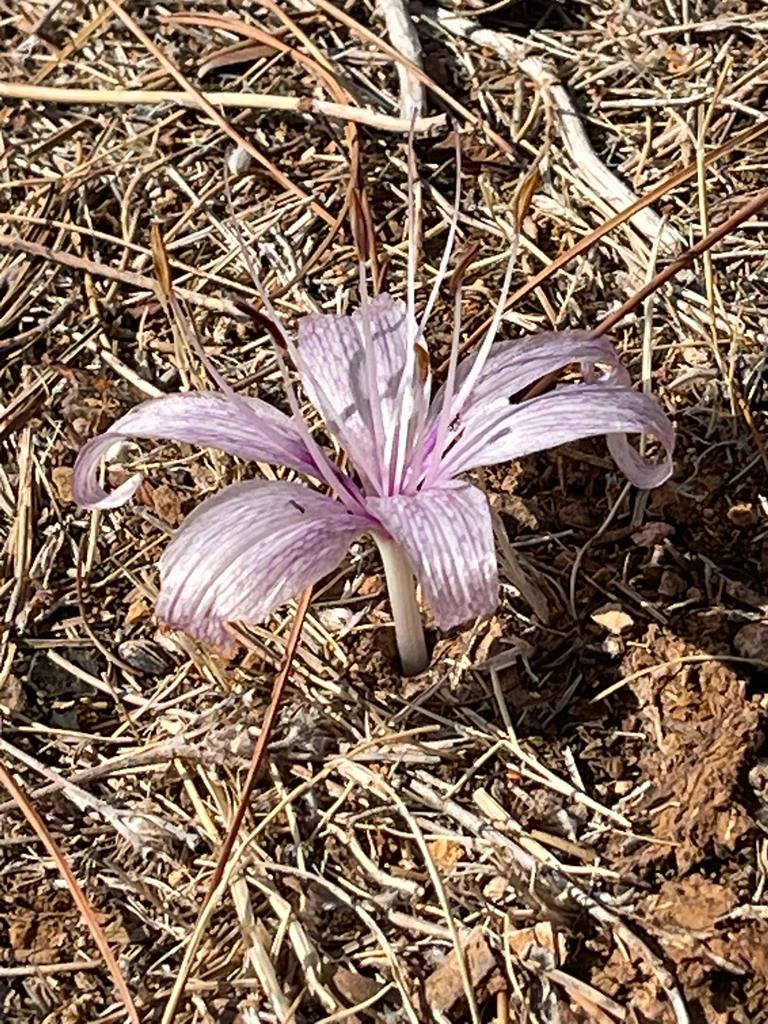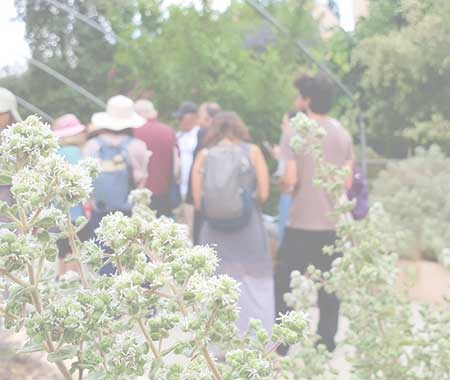סתוונית: Suranjan is composed of the subterranean tubers of Colchicum species.
Part in use: bulb
Temperament and Taste:
Colchicum possesses a hot temperament of three degrees and a dry temperament of the second degree. Its taste is bitter.
Botanical Description:
Colchicums are perennial plants that flourish in damp meadows, pastures, and light soils. They grow on mountain slopes before rain. A notable feature is their subterranean bulb, resembling tubers or saffron bulbs. Colchicum leaves, which are narrow, long, linear, oval, and pointed, typically emerge in spring. The flowers, appearing singly or in groups of 2-3, resemble saffron flowers but differ in stamen count. Colchicum’s corm is elongated compared to saffron’s more circular one. Its fruit capsule houses 3 compartments, each containing 50-70 seeds. The seeds are small, spherical, dark brown, odourless, and possess a bitter and spicy taste. Suranjan seed powder shares these characteristics.

התמונה באדיבות: גידי גור
Function and Use in Traditional Medicine:
Suranjan and its extracts have been employed traditionally to treat conditions such as gout, rheumatism, gonorrhoea, and prostate enlargement. The extract has even been explored for its potential in cancer treatment. Colchicum’s mild toxicity induces deep sleep without addictive side effects. It alleviates muscle and joint pains, stomach discomfort, and joint inflammation. Furthermore, it aids in sexual health and other conditions. Internally, Suranjan is used sparingly in traditional Indian medicine for various purposes. Externally, it’s applied as a poultice to reduce inflammation and pain.
The potency of Suranjan often comes to light when combined with other herbs, creating effective medicinal blends. One such combination involves mixing Suranjan with ginger and pepper, creating a paste with honey for a nightly consumption that enhances sexual vigour. For those seeking relief from sciatic nerve pain and gout, a powdered mixture of Suranjan and Aloe succotrina, consumed with water, offers potential respite. Moreover, the fusion of powdered Suranjan with ground saffron and egg yolk forms a soothing poultice, adept at alleviating bone pain and diminishing joint swelling. These amalgamations exemplify the synergistic effects achieved through traditional wisdom and herbal pairings.
Colchicum Application in Gout and Mediterranean Fever:
The use of colchicum in treating gout and Mediterranean fever has received approval from the German Commission E monograph.
Perspectives from Iranian Traditional Medicine:
In Iranian traditional medicine, Suranjan is referred to as “Moshil-e-Balgham,” signifying its phlegm-purging properties. It possesses astringent and phlegm-absorbing characteristics, particularly in joints. It’s recommended for sciatic nerve pain and gout, acting as a sexual enhancer alongside ginger and pepper. The seeds are used medicinally for acute gout.
Research:
Numerous studies have explored the effects of Suranjan and colchicine in treating gout and joint issues. Colchicine’s significance extends beyond gout to conditions like liver fibrosis, Sweet’s syndrome, asthma, and more. Colchicine derivatives also exhibit potential against cancer cells by disrupting cell division.
Active Ingredients:
Colchicum contains various compounds, primarily alkaloids with tropolone and isoquinoline structures. Phenolic compounds, flavonoids, tannins, and carbohydrates are also present.
Dosage:
In Iranian traditional medicine, Suranjan dosage ranges from 1.6 to 2.2 grams. In phytotherapy, colchicine dosage varies based on the purpose.
Substitutes and Correctors:
Henna and Commiphora mukul can serve as substitutes and correctors for Suranjan in joint pain.
Warnings and Precautions:
Suranjan can be harmful to the stomach and may weaken stomach and liver functions.
Planting and Season:
Colchicum is planted in fall, and propagation occurs through its bulbs. Bulbs are cultivated at a depth of 25 to 30 cm. Flowers emerge from the bulbs in spring.
מאת גידי גור, יו”ר העמותה. מטפל ברפואה סינית חוקר ומחבר ספר רפואה פרסית.


